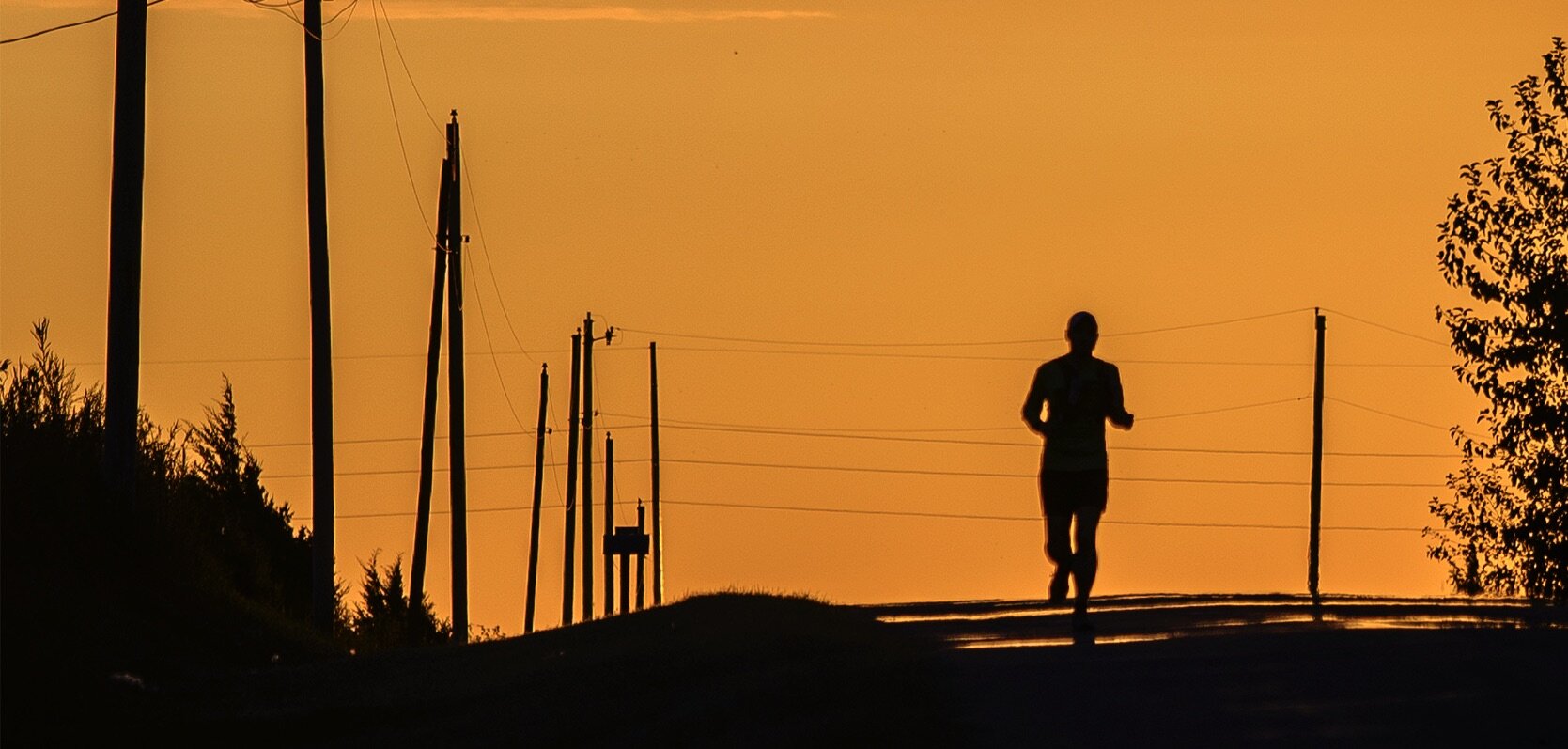I’m writing to you from quarantine. I’m not sure how long we’ve been doing this. Each day – an amalgam of video calls, text messages, stiff runs, and trickling hours – feels like a carbon copy of the day before. I have felt compelled to write about this anxious idleness for weeks now, and I’ve started this post in my head a dozen times, but I haven’t been able to find a direction to follow. Nothing is happening, everything is happening, and the internet is oozing with quarantine opinions. What newness is there for me to notice?
But this weekend, I found myself glued to YouTube as a spectator of the Quarantine Backyard Ultra. The ultrarunning race started at 6:00am on Saturday morning. It’s now midafternoon on Monday, and 56 hours later, the race is still going.
The ultrarunning universe is replete with bizarre challenges intended to explore the recesses of the human mind by pushing the limits of the human body. Ultra distances begin at 27 miles, and there is no upper limit. Fervent ultrarunners cross deserts in the heat of summer, run to the summits of storied mountains, struggle through spiritual depletion, and endure the elements, all in the pursuit of distance and the self-transcendence that sometimes follows.
The backyard ultra is a particularly devilish endeavor in this tradition of endurance. The premise is simple: participants must run 4.17 miles every hour for as long as possible. The quicker you finish one hour’s lap, the more time you have to rest before beginning the next hour’s lap. If you run this way for 24 hours, you will cover 100 miles. But 24 hours is not the limit; rarely do backyard ultras end in 24 hours because the last competitor running wins, and it turns out that people can run for remarkable lengths of time, especially when surrounded by kindred spirits. Usually, competitors in a backyard ultra all run the same course and abide by the same clock in a communal celebration of solidarity and suffering.
But these are not usual times, and the abnormality of this moment has given birth to the Quarantine Backyard Ultra. The Quarantine Backyard Ultra combines the grinding monotony of a backyard ultra with the coronavirus demand of physical isolation. Each of the race’s 2,000 participants signed up to run 4.17-mile laps, alone, in their backyards. “Backyard” in this context varies wildly. Many people are staying close to home by running loops on neighborhood streets. Others have opted to log miles on treadmills, a particular hell that dumbfounds me. A Swedish woman plowed a path on a frozen lake in the Arctic Circle. And one man, in a demonstration of forbearance – or madness? – unlike any I’ve ever seen, is running laps of his living room couch for dozens and dozens of miles. All of this is broadcast on YouTube, and it is oddly evocative of these weeks lived in quarantine: one lap, then another, then another, unfolding slowly, accumulating. It is incomprehensible and mesmerizing. Somehow, I cannot turn away.
This metaphor of ultrarunning mimicking quarantine is easy, of course, perhaps even a bit lazy. As far as metaphors go, it’s not unique, either. We have long been fascinated by tales of interminable labor – Sisyphus pushing a rock uphill, George Mallory reaching compulsively for the summit of Everest, Aureliano Buendía melting and casting golden fishes over and over again. Nonetheless, the simple transference of backyard ultra endurance to the realities of quarantine life is fortifying. If Mike Wardian – hell, if normal people in normal basements on normal treadmills – can run a lap, and another lap, and another lap, for hours and hours on end, surely we can make it through another Monday inside and alone, together.
From the unchanging containment of my apartment, I’ve noticed that watching the Quarantine Backyard Ultra can be hypnotic. After the initial fervor of early laps, the rhythm of the race settled: 45 minutes of patient motion, a few minutes of conversational camaraderie, and then a collective deep breath before the next hour begins. Such a rhythm reminds me of Buddhist retreat practice. In retreat, we sit silently in repeated periods of meditation, interspersed with mindful motion and occasional work, as we slowly withdraw the senses from the frenzied pace of modern life. If you do this with gentle care for long enough, the inner furor of planning and worrying and reaching and judging ceases and becomes still. You may even start to notice, in an uncomplicated and peaceful way, the ever-changing and impersonal nature of experience.
As someone who has sat many retreats and run many miles, I often wonder if ultrarunners and Zen monks alike are seeking the same end: a moment of quiet so simple and so complete that (to quote my beloved Dogen) the body and mind drop away. In that moment, on the cushion, on the treadmill, around the block, at the bottom of this breath or at the top of that breath, we are called to remember: there is nowhere to go. This is all there is. We’d better get to know it. It will have to be enough.

